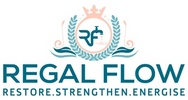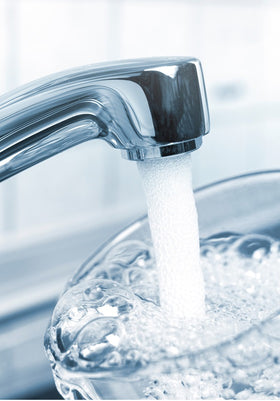
Seawater Reverse Osmosis Systems: Find the Best Prices
Thirsty for a solution to salty water? Short answer: osmosis is natural flow—reverse osmosis flips it with pressure to purify. In “Seawater Reverse Osmosis Systems: Find the Best Prices,” we explore Reverse Osmosis Systems for Commercial & Industrial Applications and how to buy smart without drowning in costs. Keep reading!
The Complexity and Cost of Seawater Desalination
The Challenges of Treating Seawater
Turning seawater into something drinkable isn't as easy as it sounds. Seawater is loaded with salt, minerals, and even microscopic sea critters. These can wear down your system fast if you’re not prepared. That’s why desalination systems need to be tough, well-designed, and energy-efficient. And if the water quality changes with the tide or season, your system needs to keep up.
Why SWRO Systems are More Expensive Than Freshwater RO
Freshwater RO systems are like bicycles—simple, light, and cost-effective. SWRO systems? They’re more like off-road trucks. They need heavy-duty pumps, extra-strong membranes, and corrosion-proof parts just to handle seawater’s harshness. All of that makes them pricier upfront, and costlier to keep running. But in places where fresh water is scarce, there’s really no alternative.
Key Factors Influencing Seawater RO System Price
System Capacity and Desired Output
Need a lot of water? You’ll need a big system. That means more membranes, more power, and more pounds on the price tag. Smaller systems might work for island resorts or small communities. But once you get into city-scale output, you're looking at a serious investment.
Pre-Treatment Requirements (Intake, Filtration)
You can’t just pump seawater straight into a membrane. It needs a clean-up first. That might mean intake screens, chemical dosing, or filters that catch sand and seaweed. If your source water is particularly dirty, pre-treatment becomes a bigger (and more expensive) part of the setup.
High-Pressure Pumps and Energy Recovery Systems
Seawater needs to be pushed through membranes at massive pressure—sometimes over 800 psi. That takes powerful pumps, which cost a lot and eat up energy. To ease the energy burden, many systems use energy recovery devices. They help, but they also add to the initial cost.
Specialised RO Membranes for Seawater
Membranes are the heart of an RO system. For seawater, they’ve got to be strong enough to handle the pressure and fine enough to filter out salt. These specialised membranes cost more than the ones used for freshwater. And when they wear out, they’re not cheap to replace.
Materials of Construction (Corrosion Resistance)
Saltwater is rough on metal. It corrodes almost everything. That’s why SWRO systems use stainless steel, FRP, or even titanium in key areas. These materials hold up well but come with a higher price tag.
Level of Automation and Control Systems
Modern SWRO systems often include digital controls, sensors, and remote monitoring. That means fewer errors, quicker fixes, and smoother operation. But all that tech adds cost. For large or mission-critical setups, it’s usually worth every penny.
Estimating the Price Range for Different SWRO System Sizes
Small to Medium Scale Systems (e.g., for resorts, islands)
If you’re running a boutique resort, a small island community, or a yacht, you’re looking at around £5,000 to £20,000. That includes compact systems built for reliability in remote spots. Prices can rise if you need more automation or tougher materials.
Large-Scale Municipal or Industrial Desalination Plants
Big water needs call for big systems. These can start at £100,000 and go well into the millions. They're custom-built to match output needs and environmental regulations. Think full automation, large intake structures, and sometimes even solar integration.
Additional Costs Beyond the Initial System Purchase
Engineering and Design
No two sites are the same. That’s why most systems need custom engineering. From water chemistry to layout logistics, tailored design helps avoid costly mistakes. It’s smart planning—but it adds 10–15% to your total cost.
Site Preparation and Infrastructure
Getting ready for an SWRO system isn’t just about placing equipment. You might need to build seawater intakes, roads, power lines, or water storage. In some cases, site prep can cost more than the system itself—especially if you're off the beaten path.
Installation and Commissioning
Proper installation is key to system performance. That means trained pros, pressure testing, leak checks, and staff training. Commissioning ensures your system runs smoothly from day one. Don’t skip it.
Permitting and Environmental Impact Assessments
You can’t just drop a pipe into the sea and call it a day. Many locations require permits, and most need environmental reviews. These steps can delay your project and add to costs—but they’re critical for long-term success.
Ongoing Operational and Maintenance Costs of SWRO Systems
Energy Consumption (Significant Factor)
Electricity is the biggest ongoing cost for most SWRO systems. High-pressure pumps don’t come cheap to run. Some sites are now pairing SWRO with renewables to cut energy bills. It’s an upfront spend, but worth it long-term.
Chemical Usage for Pre-Treatment and Cleaning
Chemical dosing helps keep membranes from scaling and fouling. Regular cleaning extends membrane life. The costs add up, and you’ll need proper storage and handling too.
Membrane Replacement (Specialised and Costly)
Membranes don’t last forever. Expect to replace them every 3–5 years, depending on how well you treat your feedwater. Replacements can cost thousands, so keep that in your maintenance budget.
Labour and Monitoring
Even with automation, someone has to watch over the system. That could be a part-time tech for a small setup—or a full team for a large plant. Monitoring helps catch issues early and keeps things running smoothly.
Conclusion: Evaluating the Investment in Seawater Reverse Osmosis Technology
SWRO systems aren’t cheap—but they’re often the only answer in places short on freshwater. If you understand all the costs—from the first pipe to daily operation—you’ll be in a better position to plan and budget. When done right, an SWRO system delivers clean water reliably for years. It’s more than equipment—it’s a long-term investment in resilience and sustainability.
More Reverse Osmosis info we think you'll love
RO Systems in the Food & Beverage Industry: Enhancing Quality and Compliance
Implementing RO Technology in Hospitality: Elevating Guest Experience
Reverse Osmosis in Healthcare and Laboratories: Ensuring Purity and Safety
Optimising Coffee Shop Operations with RO Water Filtration
Selecting the Right Commercial RO System for Your Business
Maintaining Your Commercial RO System: Best Practices and Tips
Which Chemical is Best for RO Membrane Cleaning?
Industrial Reverse Osmosis Cost per Gallon
Commercial Water Filtration Systems
Industrial Reverse Osmosis System Cost
Light Commercial Reverse Osmosis System
Reverse Osmosis Pressure Vessel



Leave a comment